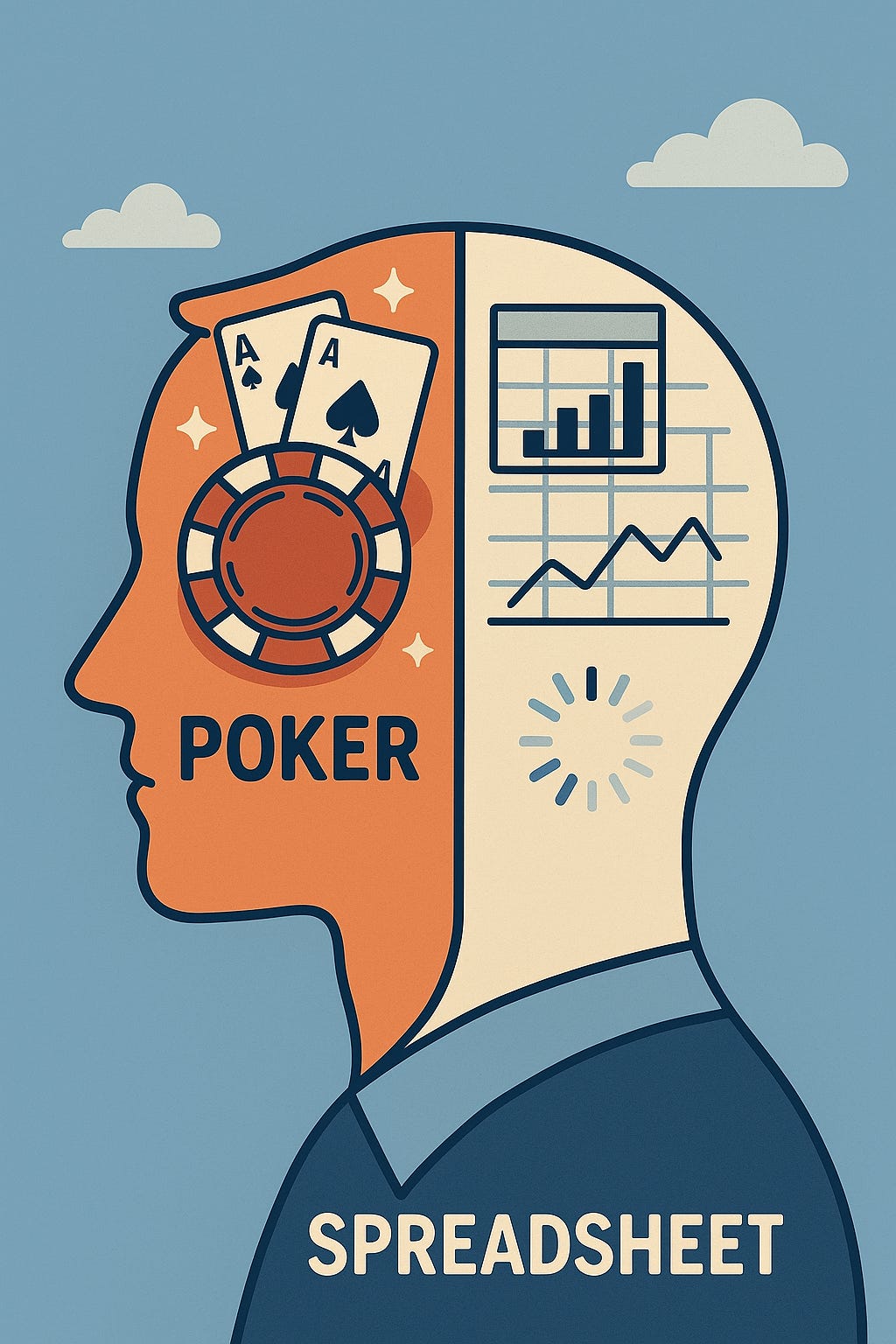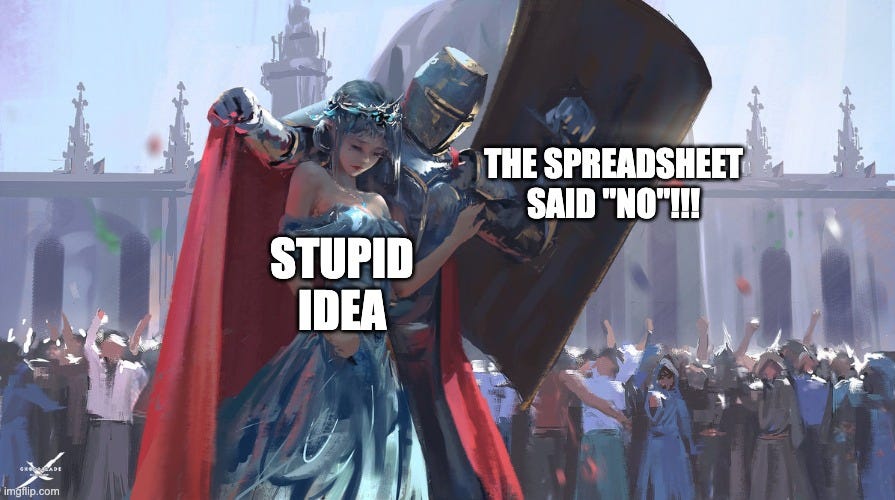5 books that will change how you make decisions under uncertainty
Most "decision-making" advice is actually risk-avoidance advice in disguise.
Think about every business book you've read about decisions. They all assume you have complete information, clear options, and time to analyze. But when was the last time you made an important decision with complete information? Never. You're always betting with incomplete data, shifting rules, and time pressure.
Here's what I learned after four years as a professional poker player: the skill that matters isn't optimizing when you know everything—it's winning when you know almost nothing. Most business leaders are terrible at this because they've been trained to avoid being wrong rather than trained to capture opportunities.
The selection criteria (that becomes your edge)
I chose these five books because they teach the opposite of what most decision-making content teaches. Instead of "how to make perfect decisions," they teach "how to win with imperfect information." Each addresses a specific failure mode I see constantly in data teams and product orgs:
Prasad: Why our obsession with avoiding Type 1 errors (false positives) blinds us to devastating Type 2 errors (missed opportunities)
Suleyman: Why "wait and see" strategies fail during technological inflection points
Mollick: Why treating AI like a predictable tool instead of an uncertain collaborator kills value
Housel: Why we mistake randomness for patterns and luck for strategy
Coates: Why stress makes us risk-averse exactly when we should be taking risks
Most business cultures reward people who avoid being obviously wrong rather than people who capture non-obvious opportunities. These books teach you to flip that script.
"What I Learned About Investing from Darwin" by Pulak Prasad
Holy cow, this is an amazing book. I didn't know this guy existed, but sometimes it's worthwhile expanding your horizon - in this case, to India. There are only a handful of people on earth able to express business strategy so clearly and simply as Pulak does.
The core insight? Type 1 vs Type 2 errors. Type 1 errors are false positives (thinking something works when it doesn't). Type 2 errors are false negatives (missing something that actually works). Most business cultures obsess over avoiding Type 1 errors - they hate being wrong about new initiatives. But this completely misses the bigger picture.
Pulak argues that in investing (and by extension, product management), Type 2 errors are often more costly. The opportunities you miss, the products you don't build, the bets you don't take - these can kill you faster than the occasional failure.
This framework describes my approach to PM perfectly - and probably explains why it doesn't "click" with traditional PM roles unless the company is facing truly strategic, existential-level challenges. I'd rather spend a month really discovering and understanding the landscape, even if it means letting one huge opportunity pass by, than steer the company into certain abyss through hasty decisions.
Who should read this: Product managers, data leaders, anyone making strategic decisions under uncertainty. If you're tired of "best practices" that just help you avoid blame, this book is for you.
How to read it: Front to back. Pulak's writing is so clear that skimming would be a disservice.
"The Coming Wave" by Mustafa Suleyman
"It's no exaggeration to say the entirety of the human world depends on either living systems or our intelligence." When the co-founder of DeepMind writes a book about AI, you listen.
But this isn't another AI hype book. Suleyman delivers cold, hard facts about what's coming - however unfun they might be. His concept of "the wave" is brilliant: throughout history, there have been only about 13 General Purpose Technologies (GPTs) - fire, the wheel, electricity. We're living through another one.
Consider this: children who grew up traveling by horse and cart spent their last days witnessing the splitting of atoms. That's the scale of transformation we're talking about.
The uncomfortable truth Suleyman forces us to confront? Hard containment of AI might be necessary, but nobody wants to talk about it because it's not fun. Why can't we just continue business as usual? Because this wave is different: it's omni-use (general purpose), hyper-evolving, has asymmetric impacts, and increasingly autonomous.
Who should read this: Anyone building AI products or data strategies who wants to understand the bigger picture beyond quarterly metrics.
How to read it: Focus on Part I for the wave concept, then skim Part II for specific applications. The containment discussion in Part III is crucial but heavy.
"Co-Intelligence" by Ethan Mollick
This is a must-read at MAIA because it teaches exactly how we should all work together with AI at a business level. While everyone else is either panicking about AI or treating it like a magic solution, Mollick provides the practical framework for actual collaboration.
My personal favorite idea is the "jagged frontier of AI" - meaning you gotta try it out everywhere, again and again, all the time. AI capabilities are uneven and unpredictable, so the only way to understand what works is through constant experimentation. I have to push myself again and again to do just that, testing AI in new contexts even when previous attempts didn't work out.
The key insight: AI isn't replacing human intelligence - it's augmenting it in ways that require us to completely rethink how we work. The best results come from treating AI as a collaborator with specific strengths and weaknesses, not as a tool or a replacement.
Who should read this: Data leaders making strategic bets, PMs in uncertainty-heavy environments, founders post-pivot
How to read it: This one deserves a full read, but if you're short on time, focus on the collaboration frameworks in the middle sections.
"Same as Ever" by Morgan Housel
Morgan Housel has this amazing ability to make complex topics feel obvious once he explains them. This book is about decisions, luck, and uncertainty - and it's genuinely fun to read.
The central premise: while technology changes everything, human behavior remains remarkably consistent. Understanding these behavioral constants helps you make better decisions in an uncertain world.
As a PM, I've built this insight into the core of what I do. All fundamental product ideas should be rooted in human behavior, nothing else. Not an "opportunity" or "feature request" - things that are remarkably far away from what actually matters. When teams come to me excited about some new technology or market trend, I always ask: what human behavior is this addressing? What fundamental need that existed 100 years ago and will exist 100 years from now?
My favorite insight from the book: people systematically underestimate how much randomness influences outcomes. In data science, we often mistake correlation for causation, but Housel goes deeper - we mistake luck for skill, timing for strategy, and randomness for patterns.
Who should read this: Data scientists who want to understand the human side of their work, product managers making decisions with incomplete information, anyone who's ever wondered why their brilliant strategy didn't work.
How to read it: Perfect for skimming - each chapter stands alone. Focus on the stories that resonate with your current challenges.
"The Hour Between Dog and Wolf" by John Coates
This book is a classic in the financial world, and here's why: it destroys the myth that rational decision-making is purely a product of your brain. Your brain triggers chemical reactions in your body that provide feedback to your brain, making decision-making a whole-body experience.
Coates, a former Wall Street trader turned neuroscientist, shows how stress hormones like cortisol and confidence hormones like testosterone literally change how we perceive risk and opportunity. When you're on a winning streak, your body chemistry makes you more likely to take bigger risks. When you're losing, stress hormones make you more risk-averse - often at exactly the wrong time.
This has huge implications for data teams and product decisions. How many times have you seen teams double down on failing projects because the stress of admitting failure felt worse than continuing? Or avoid taking necessary risks because previous failures created a culture of fear?
Who should read this: Anyone making high-stakes decisions, especially in fast-moving environments. Data leaders dealing with team dynamics will find this particularly valuable.
How to read it: The first half is essential for understanding the science. The second half applies it to markets, but the principles work for any high-pressure decision-making environment.



